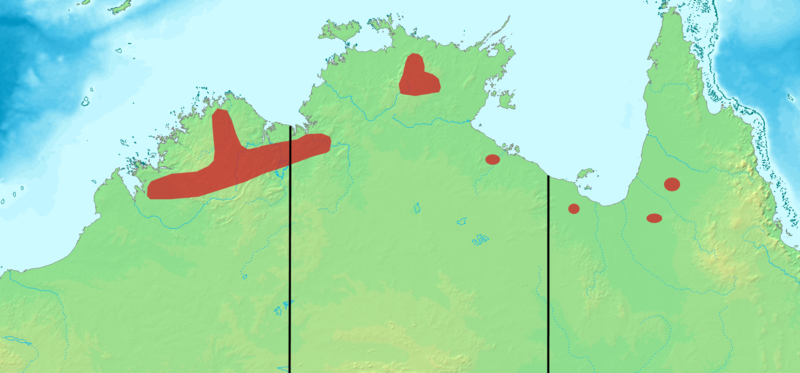 The brilliantly-colored Gouldian Finch is something of an avian anomaly. One of the most sought-after of all cage birds, it is bred in huge numbers by aviculturists worldwide. Wild populations, however, are in serious decline, and have been so for over 30 years. But, in conjunction with governmental and private groups, one dedicated conservationist is helping to brighten the species’ prospects.
The brilliantly-colored Gouldian Finch is something of an avian anomaly. One of the most sought-after of all cage birds, it is bred in huge numbers by aviculturists worldwide. Wild populations, however, are in serious decline, and have been so for over 30 years. But, in conjunction with governmental and private groups, one dedicated conservationist is helping to brighten the species’ prospects.
Taking Action
Self-made millionaire Michael Fidler was first captivated by Gouldian Finches over 40 years ago, when he chanced upon a group in a store in Manchester, England. From that point on, he has been concerned for their future. And while few people can afford to follow in his footsteps, his efforts illustrate the importance of doing whatever is within one’s abilities on behalf of conservation. Be it through money, ideas, teaching or a new observation, we all have some potential to help.
Fire Management Changes a Unique Habitat
The Gouldian Finch is limited in distribution to Australia’s tropical north (please see map), where its lifestyle and feeding habits are uniquely influenced by rain and fire. Having evolved in a harsh, ever-changing habitat, the Gouldian Finch is, in many ways, highly specialized.
For millions of years, fires and varying rain cycles necessitated a diet comprised largely of grass seeds for one part of the year, and insects for another. Researchers believe that modern fire management practices are the most important reason for the 30-year-long decline in Gouldian Finch numbers…and despite 20 years’ worth of conservation programs, the downward trend continues.
Cattle Ranching
Gouldian Finches first began having problems in Queensland, on the eastern edge of their range. Studies indicate that the population declines progressed westward…just as did the change in fire management practices and the growth of cattle ranching.
Cattle consume grasses upon which the finches depend, and the manner in which they feed stifles re-growth and encourages the establishment of non-native plants. The spread of cattle ranching has also been implicated in the recent scarcity of other animals, including the Carpentarian Rock Rat and the Partridge Pigeon.
Eco-Tourism and Release Programs
 Conservationists believe that many species will benefit if birding is encouraged as a form of eco-tourism on cattle ranches, but progress has been limited. Captive-bred Gouldian Finches are easy to come by, but when released into the wild most are quickly captured by kites, hawks and other avian predators.
Conservationists believe that many species will benefit if birding is encouraged as a form of eco-tourism on cattle ranches, but progress has been limited. Captive-bred Gouldian Finches are easy to come by, but when released into the wild most are quickly captured by kites, hawks and other avian predators.
Noble Efforts
Mr. Fidler relocated from his native UK to New South Wales, Australia, and now lives close to prime Gouldian Finch habitat. Over the past 20 years, he has donated vast sums to Gouldian Finch conservation programs and personally participated in captive and field research. One gift of $600,000 has helped to insure the survival of central Kimberley’s Gouldian Finches, one of the largest remaining populations.
Mr. Fidler also funds researchers at the University of New South Wales, and allows them access to his huge private aviary, home to several hundred birds…hats off!
Further Reading
Annual Gouldian Finch Count and other conservation efforts
Gouldian Finch Hens “Cheat” to Acquire Better Genes
Australia’s 10 Top Bird-watching Spots
Gouldian Finch Care & Newly-Discovered Facts
Gouldian Finches image referenced from wikipedia and originally posted by Nigel Jacques
Gouldian Finch range map image referenced from wikipedia and originally posted by Nrg800
 That Bird Blog – Bird Care and History for Pet Birds
That Bird Blog – Bird Care and History for Pet Birds




Hello again Frank,
what a nice page on gouldian finches!
I’m also taking consideration in keeping and breeding these pretties.
But after researching I’ve found out they are prone to air sac mites… How vulnerable are these birds?
I’m reconsidering this because they can be quite pricy where I live… That, and because I have other birds whom I plan on mixing with them in my aviary…
How do you check for air sac mites, and how do you stave off these pests off?
Thank you
Hi Raymond,
Nice to hear from you; I hope all is well. Air sack mites occur in most environments; much mention of them is made in connection with gouldians, but most birds are susceptible,,..in the zoo, we found them and related pests in birds ranging from hummers to ostriches. Gouldians and others respond well to ivermectin applied to the skin…simple and effective as long as full course of treatment is given. Symptoms of infection vary widely and are common to many other ailments…listlessness, wheezing, change in voice, but some birds will appear fine until many mites become established; vet check is the best way to diagnose,
Enjoy, best, frank
Frank
In a response to someone’s question about air sac mites you wrote: ivermectin applied to the skin…simple and effective as long as full course of treatment is given.
What is the full course of treatment? Thanks for your help.
Hi Fran…many variables, i.e. species, bird’s general condition, degree of infestation etc; exact protocol would be set-up by the vet. Best, Frank